How to Smooth Out a Bumpy Lawn
A lawn can be a beautiful addition to any backyard, but it’s one of those things that you don’t think about until there is an issue with it. For example, maybe the weeds are overpowering, and you’re not sure how to get rid of them without using harsh chemicals or using your precious time and water on weeding. Or maybe you’ve got some patches where the grass won’t grow anymore, despite watering and fertilizing every day, and no matter what you do, they stay bumpy.
A bumpy lawn is more than just an eyesore. It’s a sign of poor soil quality. The good news is that there are plenty of ways to smooth out your lawn and make it look healthier and shinier. Here are some tips on how to smooth out a bumpy lawn by following the steps below!
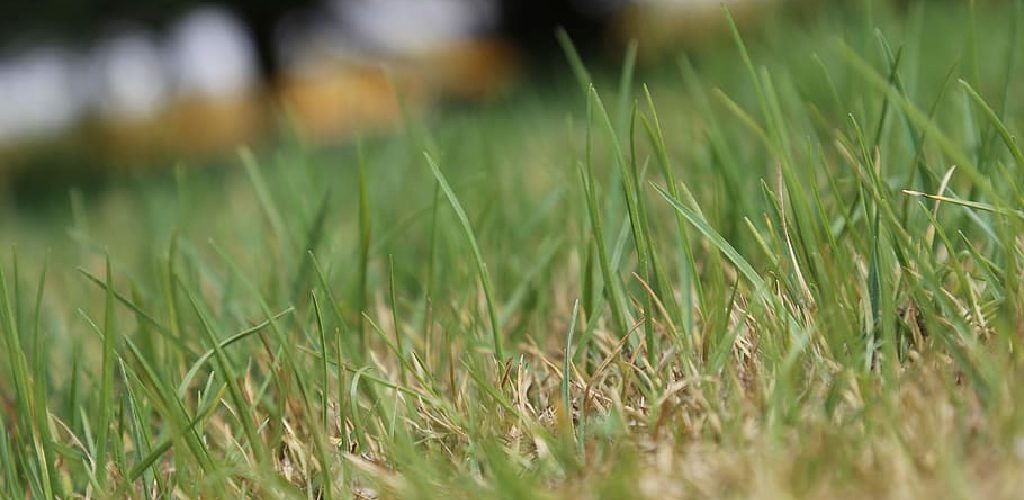
Why Your Lawn Gets Bumpy?
1. Soil Compaction:
Soil compaction is when the soil particles are pressed together. This can happen when you drive on your lawn with a car or mower. When the soil is compacted, it can create uneven distributions of air and water. This can cause problems for your grass.
2. Poor Drainage:
Another issue that can lead to water accumulation in your lawn is improper drainage. If you’ve had water accumulating in the same spots for more than a few hours after rainfall, be sure to check your drainage to see if there are any issues.
3. Improper Buffalo Sod Installation:
Buffalo grass can be challenging to handle, so be sure to hire someone with experience! Of course, perfect installation isn’t always possible, but you can avoid bumpy patches by ensuring that cut sod pieces are laid out in a uniform pattern.
4. Animals Digging Holes:
The buffalo grass in your lawn is tasty to rabbits and other animals, who like to munch on the tender stolons. This creates uneven patterns and divots in your lawn.
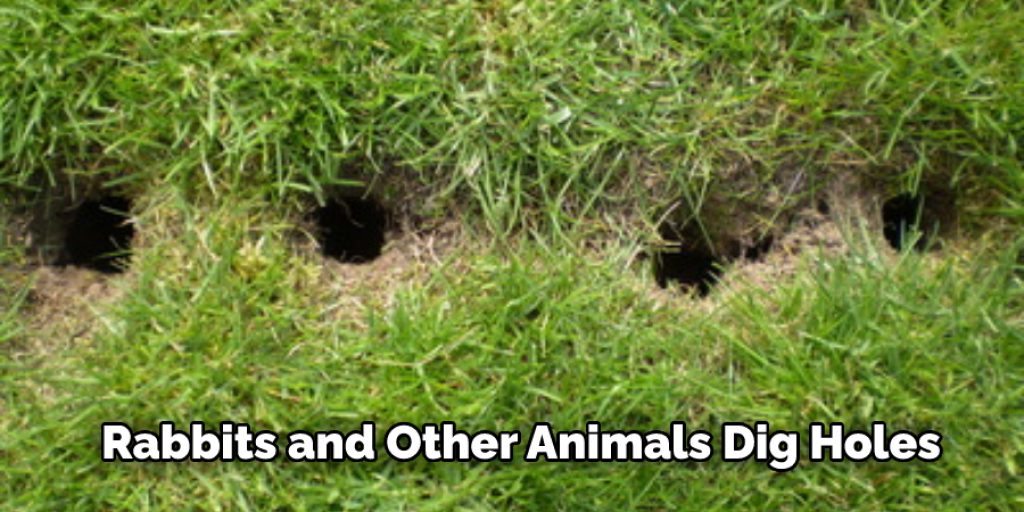
5. Competing Grass:
If your yard has cool-season grass species like fescue or bluegrass, they may be competing with the buffalo grass for nutrients and light and will result in a bumpy lawn.
In fescue lawns, buffalo will look thin and patchy in spots because the fescue grass is taking up all the nutrients, light and moisture from the soil, so the buffalo grass has nothing to eat.
If your lawn has a history of not looking thick and green, you might have infertile soil or poor soil aeration.
6. Excessive Thatch:
Thatch, the layer of decomposing organic material on your lawn, should be kept between 1/2″ to 2″. Buffalo grass tends to produce excessive thatch, which not only suffocates it but can also lead to other problems like compaction.
7. Improper Mowing:
Incorrect mowing height can also be a significant factor in creating a bumpy lawn. When the grass is cut too short, it dies and sheds more quickly, leading to a rougher surface. By cutting the grass at the proper height, you will ensure optimal lawn health while properly maintaining texture and density.
8. Bad Weather Conditions:
Bad weather conditions such as freezing temperatures and heavy rains can also cause a lawn to appear bumpy. When we get heavy rainstorms in the springtime, it is common for ground that was previously covered in snow to lose its shape. When it thaws and freezes again, often in rapid succession, the soil becomes hard and compacted.
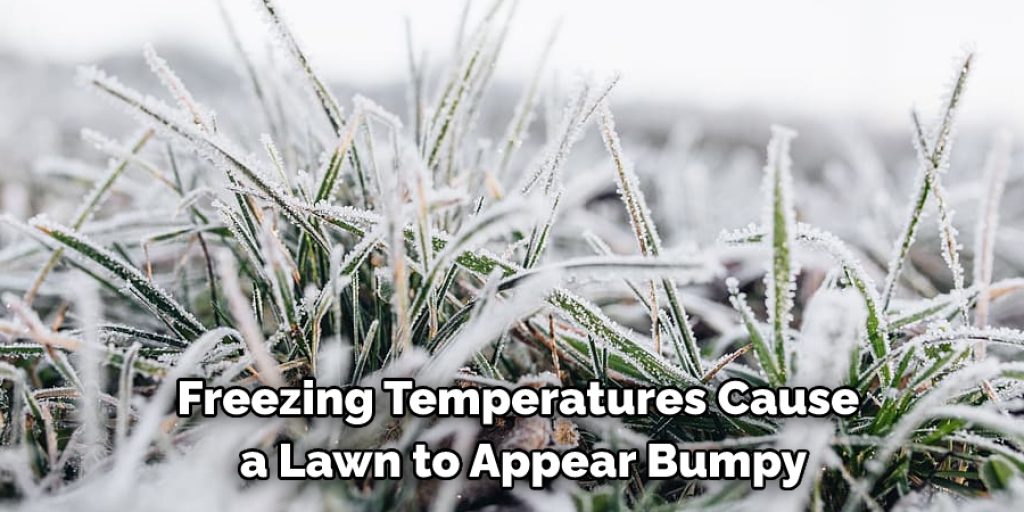
9. Lack of Water or Nutrients:
Water and nutrients such as nitrogen, potassium, and phosphorus are necessary to help your lawn maintain a healthy appearance. First, you will need to check the health of your property by looking at its general color and feeling the texture of the soil between your fingers.
If you think that there is too much-compacted soil, your lawn likely needs more moisture. If you notice that the property is light green and loose, it may be low in nutrients or nitrogen. In which case, it would benefit from a dose of fertilizer.
10. Use of Weed-and-Feed:
Using a weed-and-feed product on your lawn will impact its texture in that it will accelerate the decomposition of organic matter, creating more thatch. It is also not advisable to use these products in late summer when buffalo grass goes into dormancy since they may prevent it from going dormant properly. If you aim to get rid of grassy weeds, you can use pre-emergent weed control on your lawn instead.
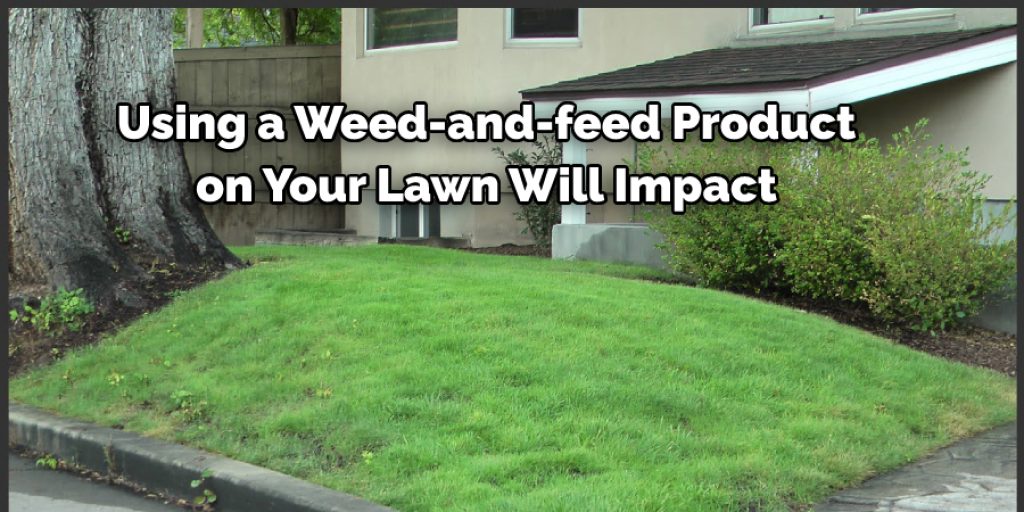
Now you have an idea what are the reasons for the bumpy lawn. If you want to know how to smooth out a bumpy lawn then continue reading this blog.
10 Methods on How to Smooth Out a Bumpy Lawn:
1. Overseed the Lawn:
For bumpy lawns, overseeding is one of the most effective ways to smooth out your property. You can do this by using a drop spreader or broadcasting the seed over the lawn with a push spreader. To ensure even distribution, walk-in criss-cross patterns across the property while applying the grass seed.
2. Aerate:
Aeration is the process of removing 3-4 inch plugs of soil from your lawn to alleviate compaction and improve growth. This can be done by renting a core aerator and running over the property in criss-cross patterns, or you can hire a professional landscaping service to do it for you. Ensure that grass seed is applied after the lawn is aerated.
3. Water Wisely:
Watering your lawn in the morning or early evening will provide more time for water to absorb into the soil, helping your grass grow deeper roots and become stronger against compaction. However, avoid watering during peak times in the afternoon when evaporation rates are highest, as dry soil can cause your lawn to become more susceptible to compaction.
4. Mow High:
Mowing high reduces the amount of time for grass blades to reopen as they heal from being cut and allows air and sunlight into the root system, reducing thatch levels and promoting healthy growth. For example, if you have been mowing your lawn at the height of 3 inches, bumping it up to 4 or 5 inches can make a noticeable difference.
5. Rake the Surface:
Raking the surface of the top area of soil will stir things up and loosen compacted soil while removing thatch buildup where grass roots cannot penetrate through tightly packed layers. This loosened soil will allow water and air to reach your lawn.
6. Sand and Seed:
Add sand to the top layer of your lawn if areas have become compacted or are excessively sloped. Once you have removed all debris, spread grass seed over the top layer, making sure to spread it evenly across the affected area. Then, apply a thin layer of fine mulch to cover the seed and keep it moist.
7. Loosen the Soil:
Do this process carefully to avoid damaging your lawn by breaking up soil clods with a shovel or aerating it by poking holes into the ground every foot apart, then filling each gap with water and allowing it to drain. When finished, rake the areas, so the soil is level and smooth.
8. Topsoil:
Topsoil will help fill in bare spots and improve water drainage if your lawn is frequently soaked while also adding nutrients to the soil. It should be applied at a 1-2 inches depth, but no more profound than that, so it doesn’t become compacted.
Most homeowners have access to free topsoil from a variety of sources, including landscaping or dump-sites where it is dumped for later collection and use.
9. Watering Mat:
Using a watering mat will help water absorb into the soil rather than run-off or evaporate, so your lawn stays healthy and can avoid compaction. Suppose your yard only receives water every other day, but it is still causing damage due to evaporation rates at certain times of the year. In that case, it may be beneficial to install a drip irrigation system.
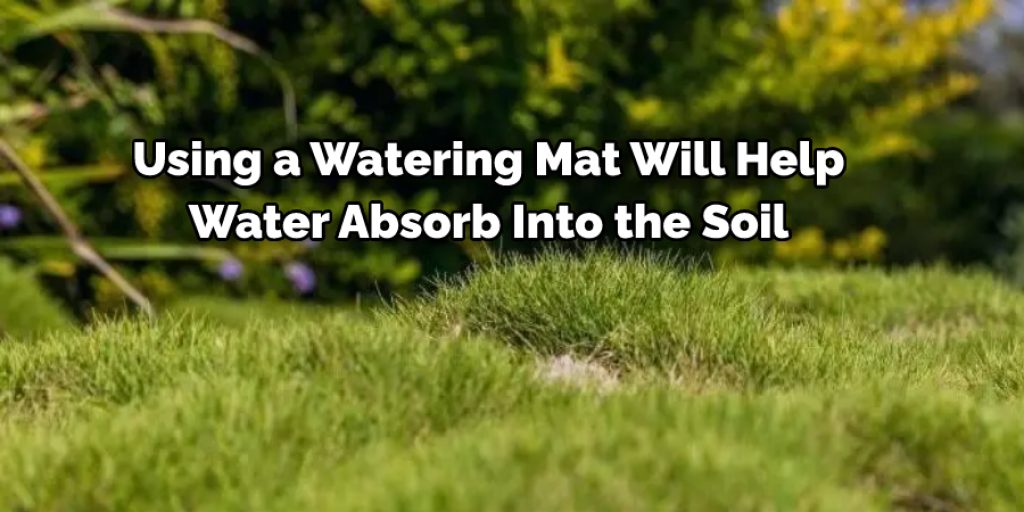
10. Till & Smooth with a Rototiller:
Using a rototiller to till and smooth your lawn can help break up thatch, aerate the soil, and bring nutrients closer to the surface. This allows water, air, and sunlight to penetrate deeper into the ground for healthier grass growth. When using this method on the grass with deep roots, make sure to cut them lower, then use a rototiller to lift the grass back up and cover it with soil.
Tips to Prevent Bumpy Lawn in Future:
1. Mow at the proper length and frequency (don’t cut too short or let the grass get too tall).
2. Fertilize correctly to avoid excess nitrogen, which causes excessive top growth. Use slow-release products and alternate with high phosphorus products to promote deep root development.
3. Use an excellent pre-emergent herbicide in the spring to prevent weeds from germinating.
4. Rake leaves in the fall before they decompose and smother your lawn.
5. Keep sprinklers off the grass when watering; this will help reduce compaction, leading to a bumpy lawn due to the poor rooting depth of grass plants. Also, avoid using a solid stream of water as this can cause gullying.
6. Avoid using a solid stream of water as this can cause gullying.
7. Water sincerely, but less frequently to develop deep roots, which will help the grass combat drought and heat stress.
8. Avoid mowing when it is very hot or cold outside, as these conditions may cause the grass to brown.
How Do You Fix a Rough Bumpy Lawn?
A rough and bumpy lawn looks unsightly and poses a risk of tripping and injury. Here are some tips to help you get a smooth and even lawn:
- First, inspect your lawn for any large rocks, debris, or uneven areas. Remove any obstacles and level the ground using a garden rake or a leveling tool.
- Next, aerate your lawn. Aeration involves making small holes in your lawn to allow water, nutrients, and air to penetrate the soil. This will help the roots to grow deeper and the grass to become more robust.
- Seed bald patches or areas of thin grass. Make sure to choose grass seeds that are suitable for your region and climate.
- Fertilize your lawn. A well-fed lawn will be thicker, creating a smooth surface. You can use a granular or liquid fertilizer, depending on your preference.
- Regularly mow your lawn to keep the grass at an even height. Be sure to use a sharp blade to prevent tearing the grass, which can lead to brown patches.
Following these steps, you can help fix your rough and bumpy lawn and get it back to a smooth surface.
Frequently Asked Questions
What Causes Lumpy Lawn?
The lumpy lawn is caused by too much nitrogen in the soil. Nitrogen is a plant nutrient that helps plants grow and produce flowers. However, too much nitrogen can cause the soil to become lumpy and lead to a lack of aeration. This can cause weeds to take over the lawn, as well as decrease the amount of water that is available to the plants.
To prevent this from happening, you should aim to apply a balanced fertilizer that contains both nitrogen and phosphorus. You can also add organic matter such as compost or manure to your soil to help improve its texture and fertility.
Does Rolling the Lawn Work?
Rolling the lawn is not a good idea because it can damage the grass and soil. It is also difficult to mow the lawn with a rolling mower because it creates too much of a mess.
Will a Roller Flatten My Lawn?
There is no definitive answer to this question as it depends on the type of roller that you are using and the type of lawn that you have. Generally, rollers that are made for hard surfaces such as concrete or asphalt will not flatten lawns very well.
On the other hand, rollers designed for grass will work better at flattening lawns. However, be sure to use the correct amount of pressure when rolling the lawn so that it does not damage the turf.
Conclusion:
If you are looking for a quick solution on how to smooth out a bumpy lawn, then look no further. This blog post has provided all the information to make the work easy for you! The key to a smooth property is getting rid of the bumps that create those pesky patches. The first step in this process is to aerate your lawn, which will open up the soil and help it use water more efficiently.
This can be done with an aerator for manual or electric models available at any garden center. It would help if you left these holes uncovered until they are filled back in with dirt, so you don’t risk damaging your grass by walking on them prematurely. Then, with a little bit of work, you can have the lawn that everyone envies. Just follow these simple instructions to get started on your journey towards the perfect green grass!




